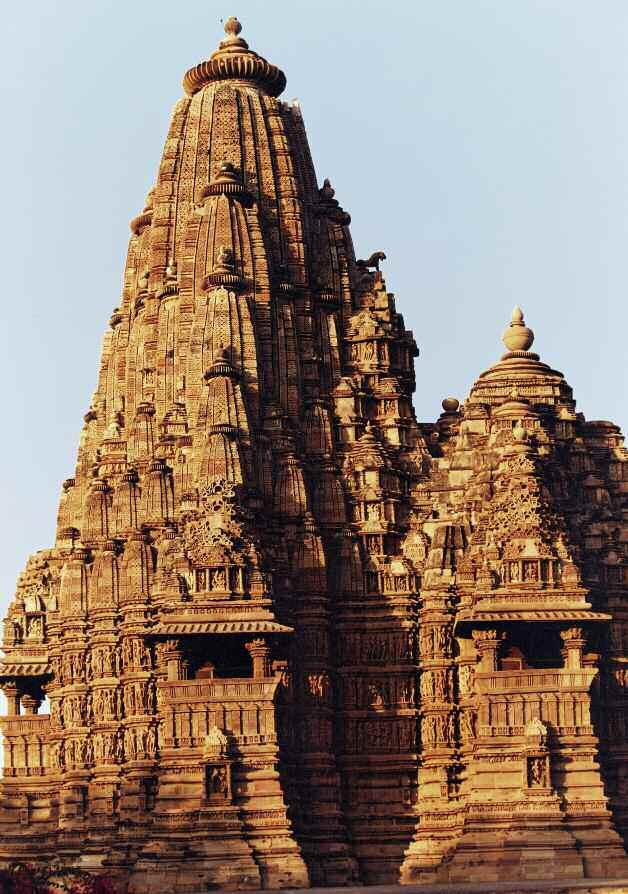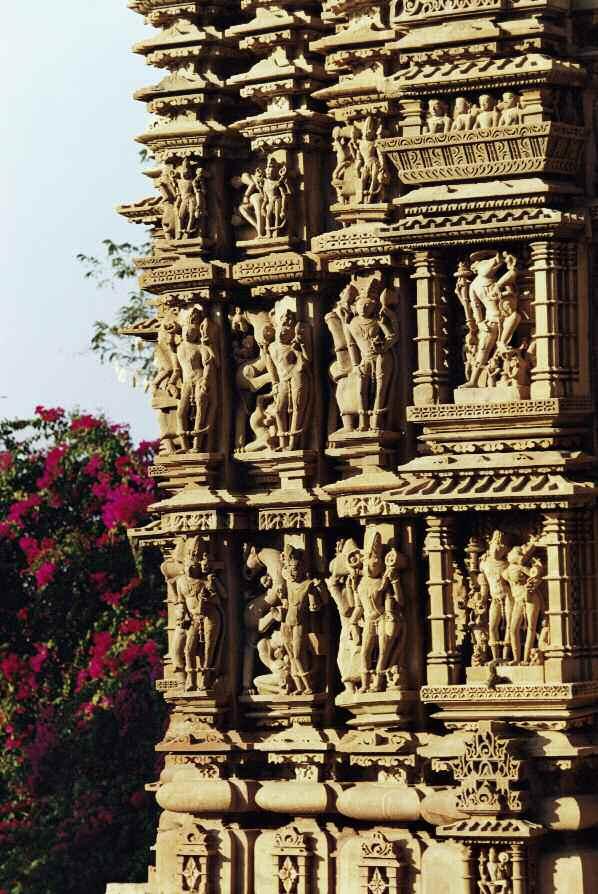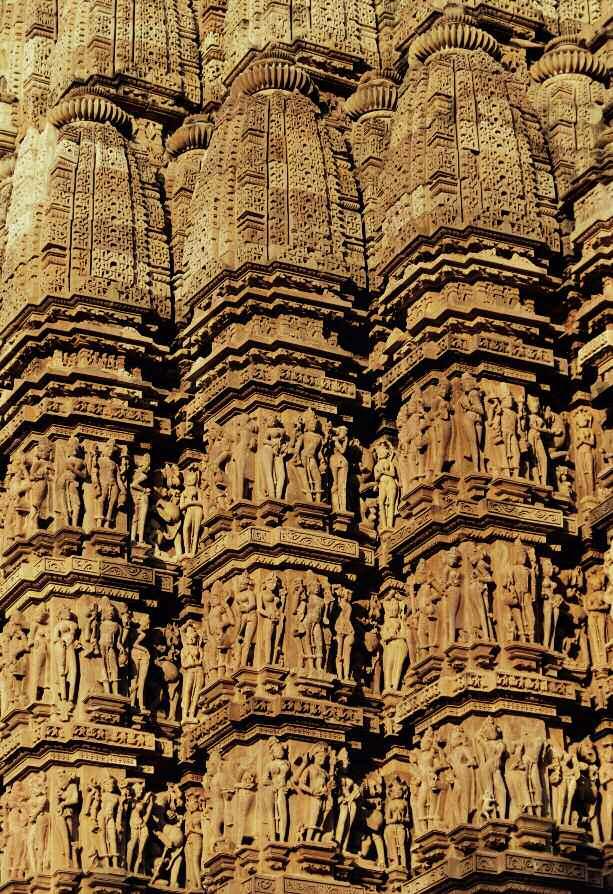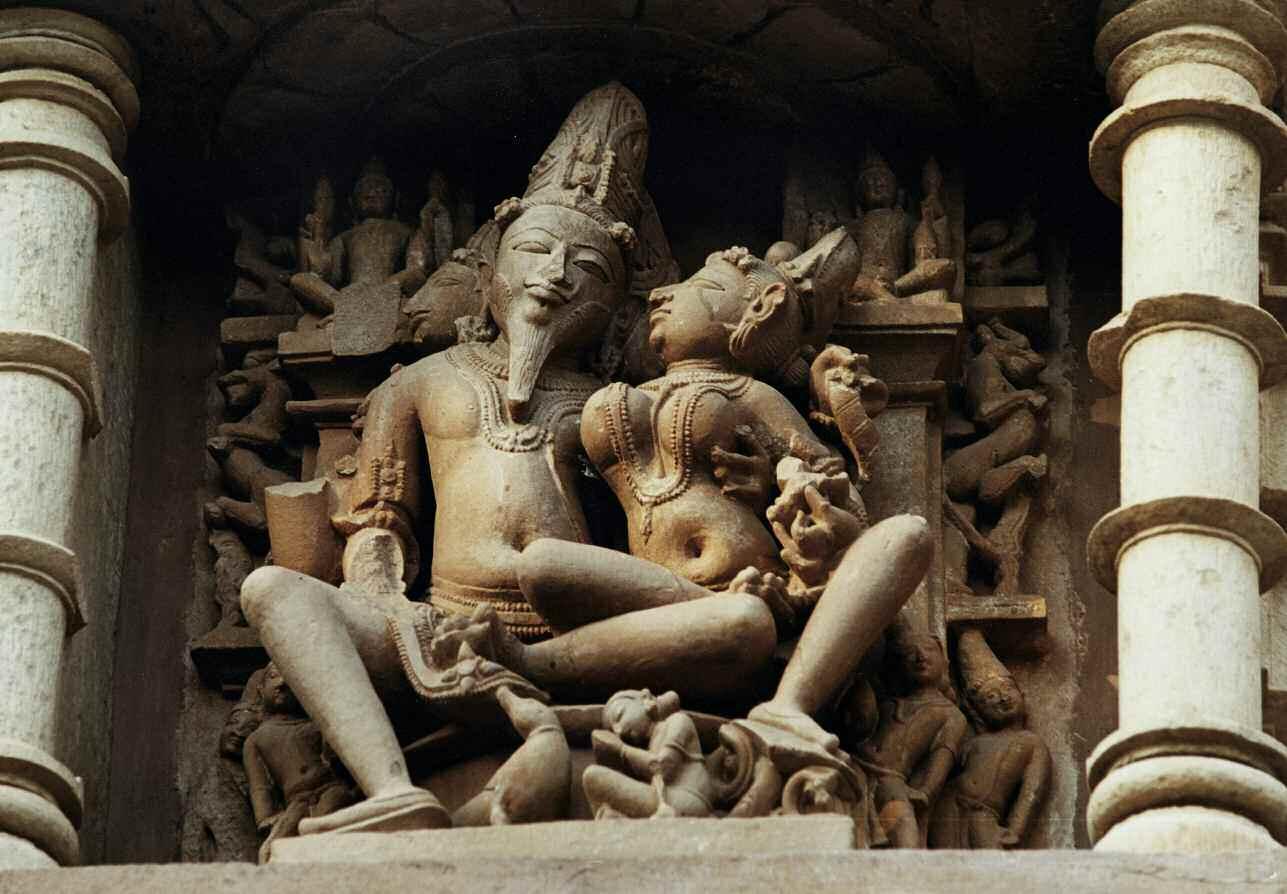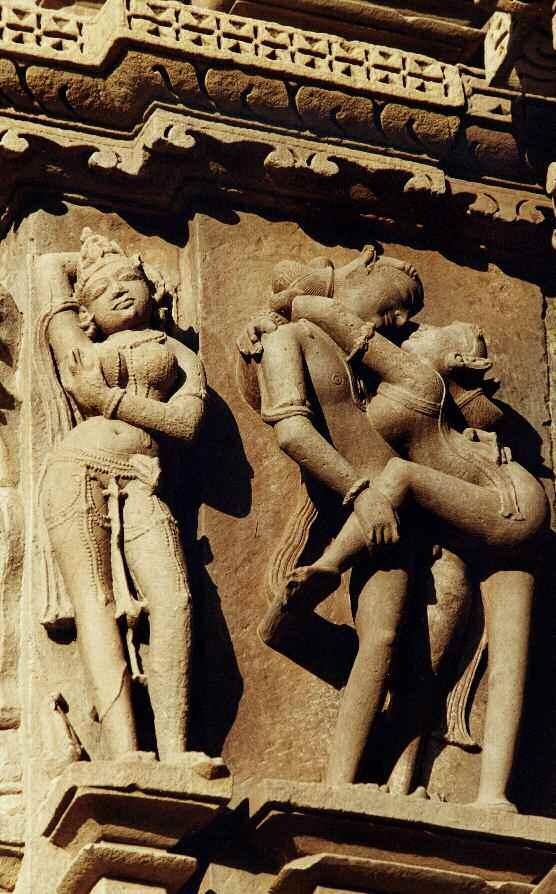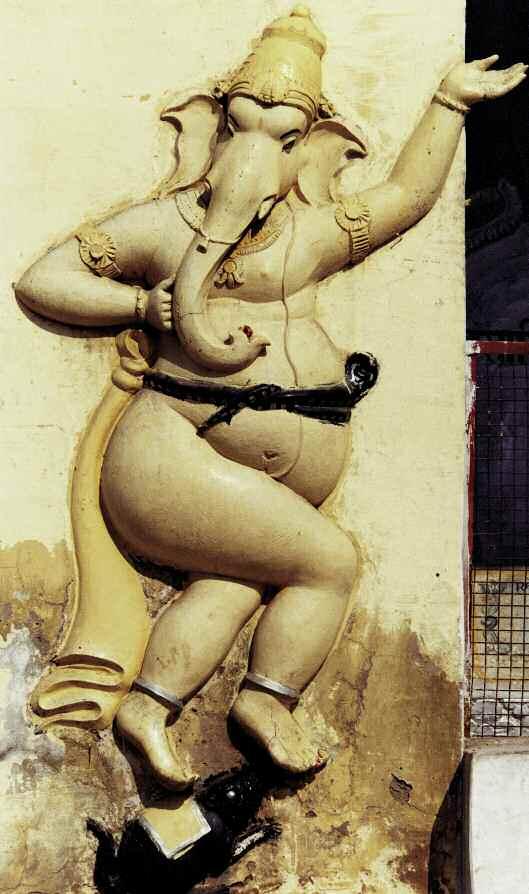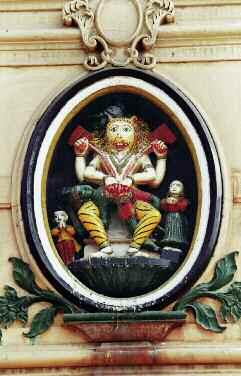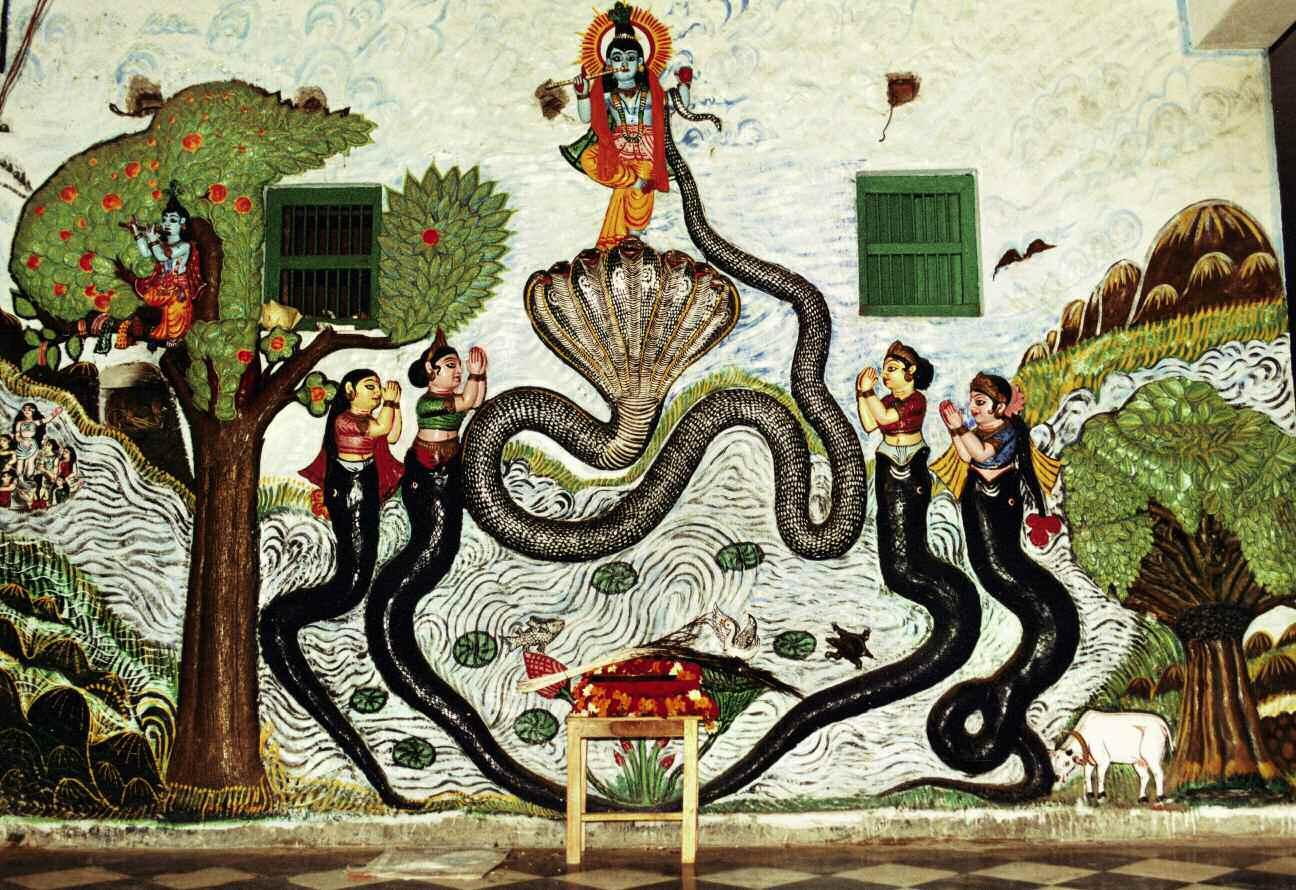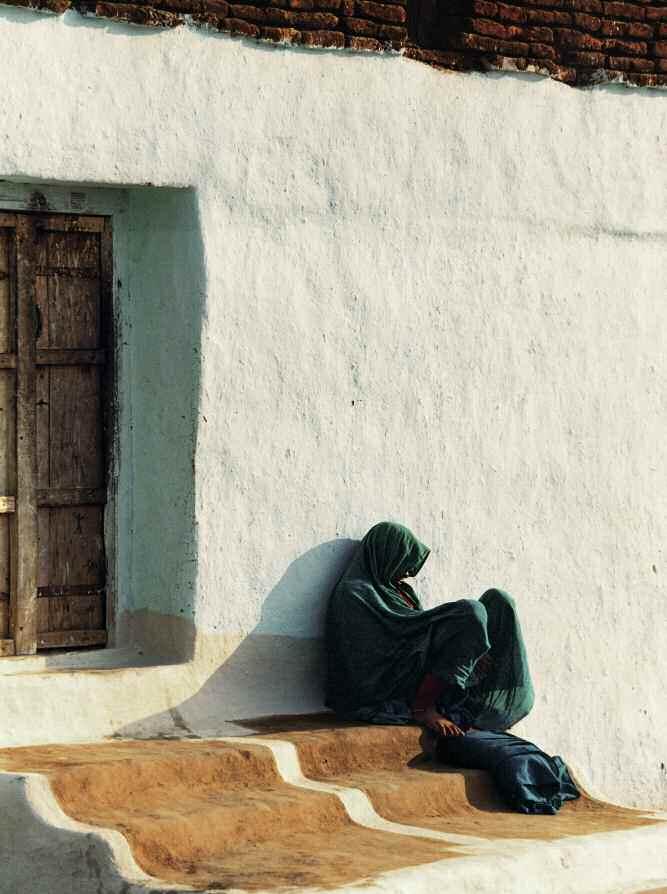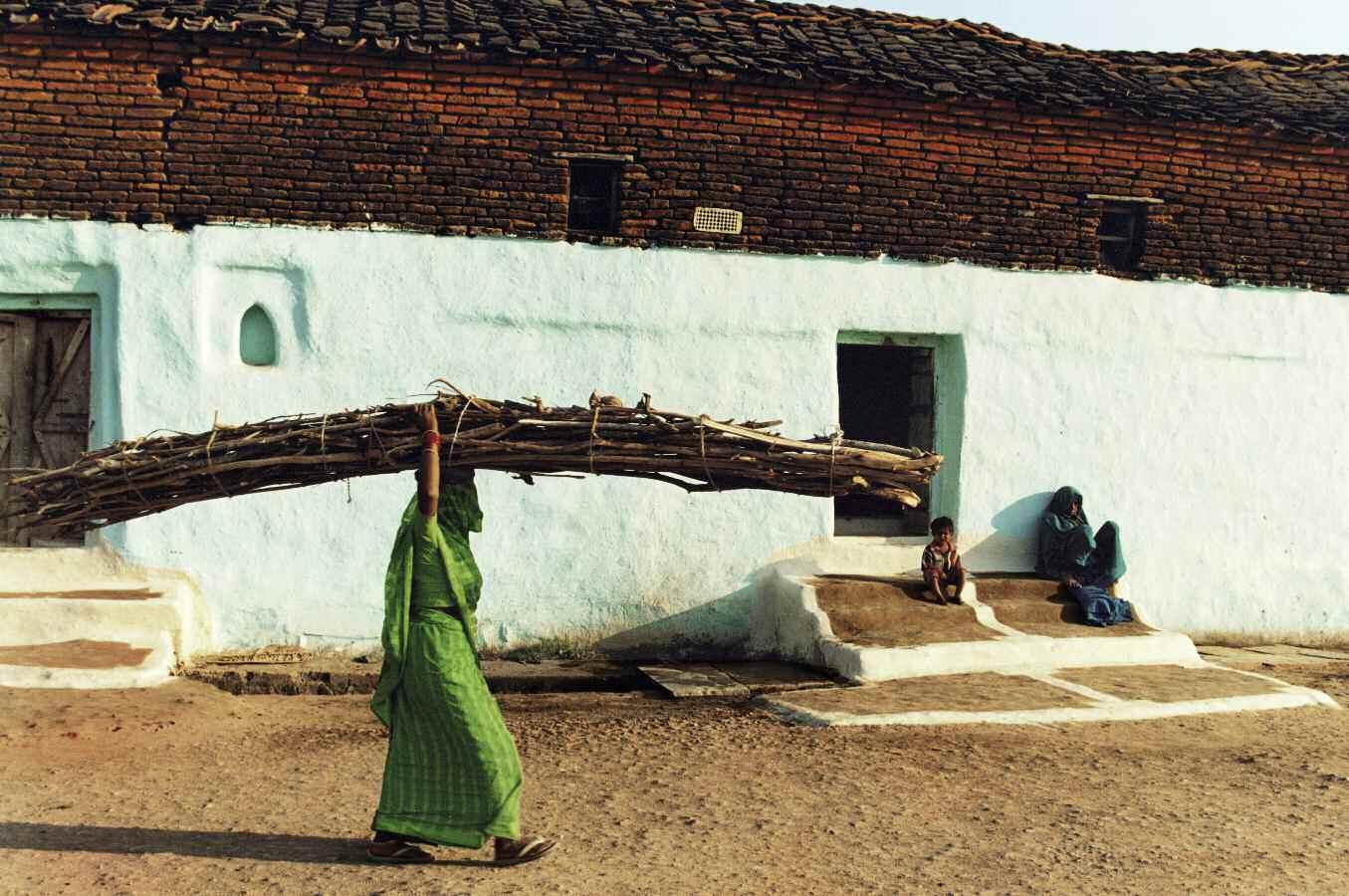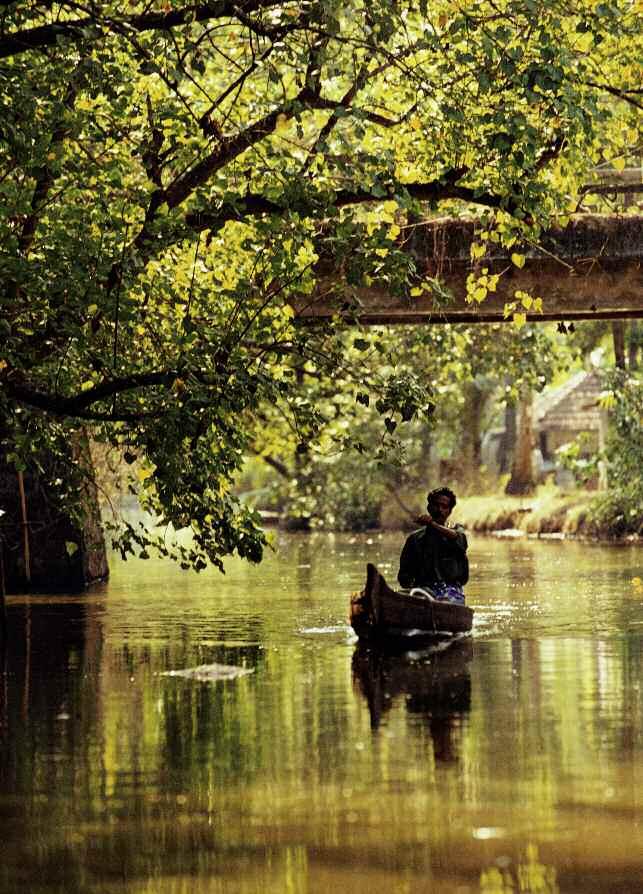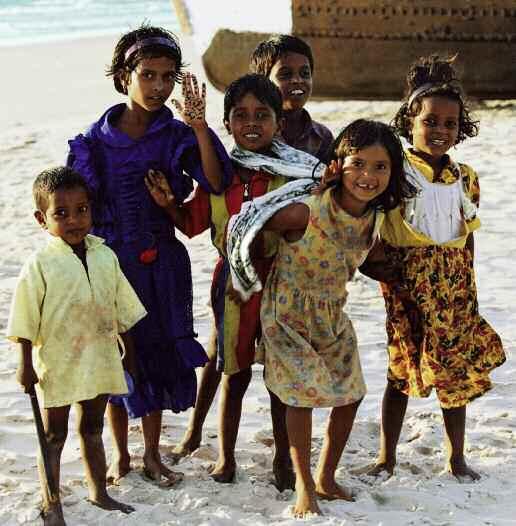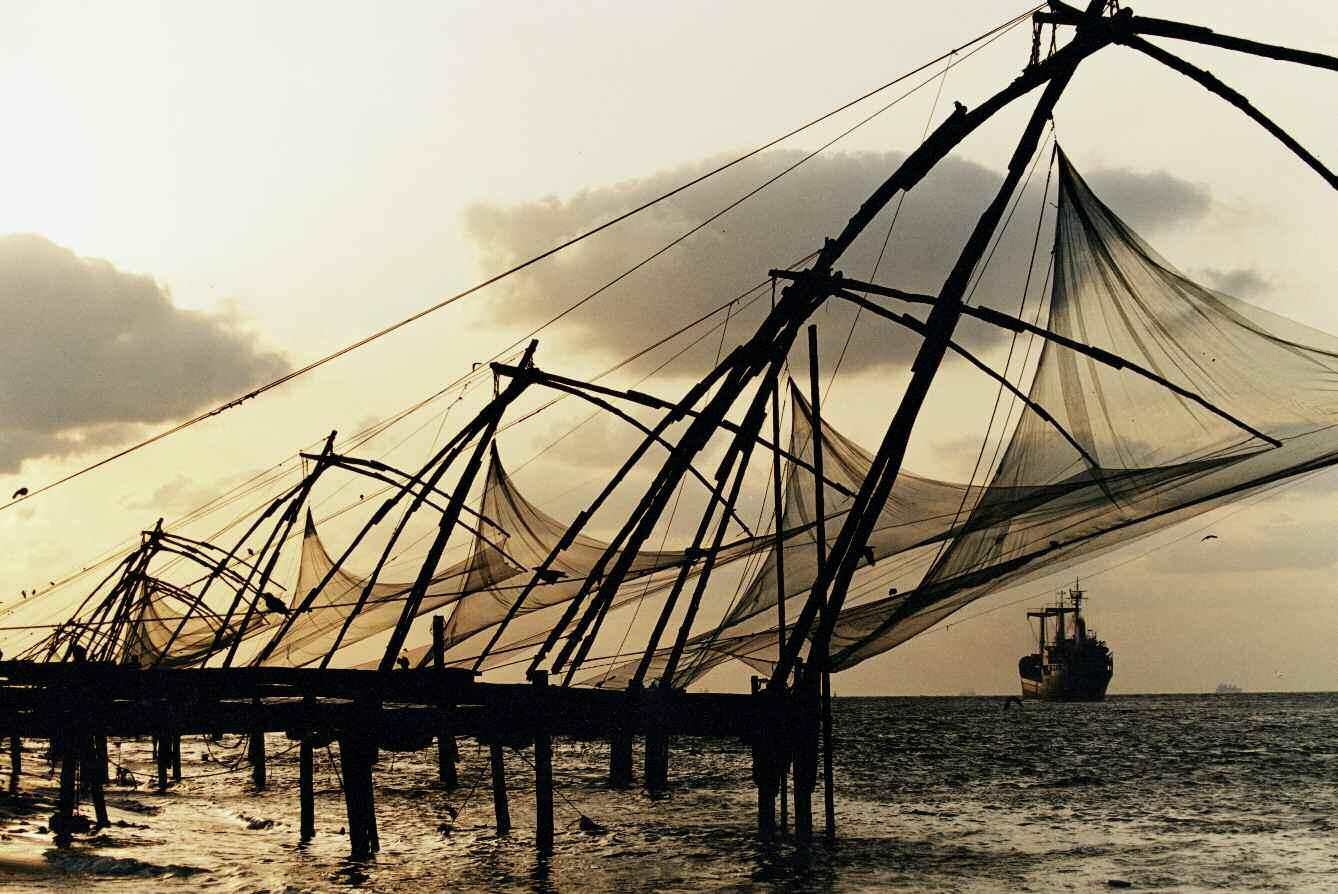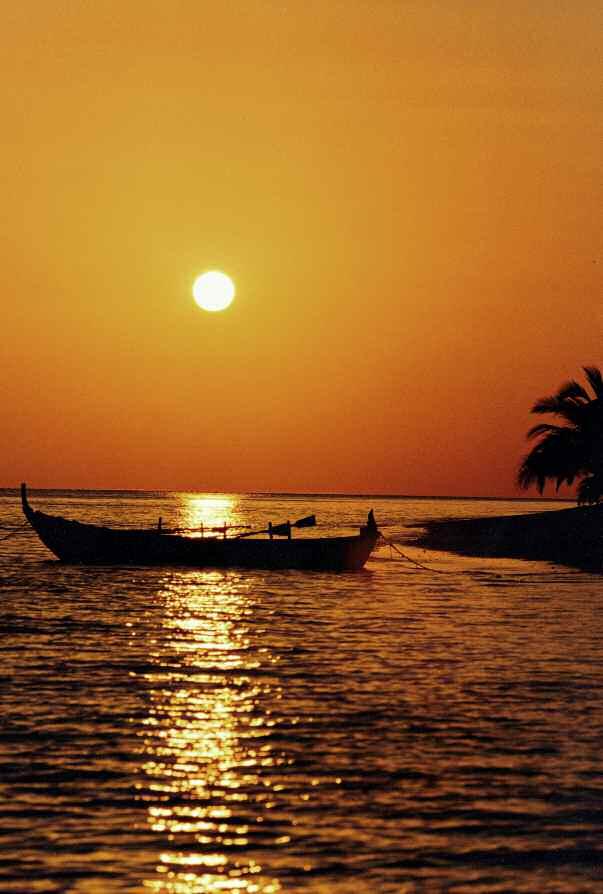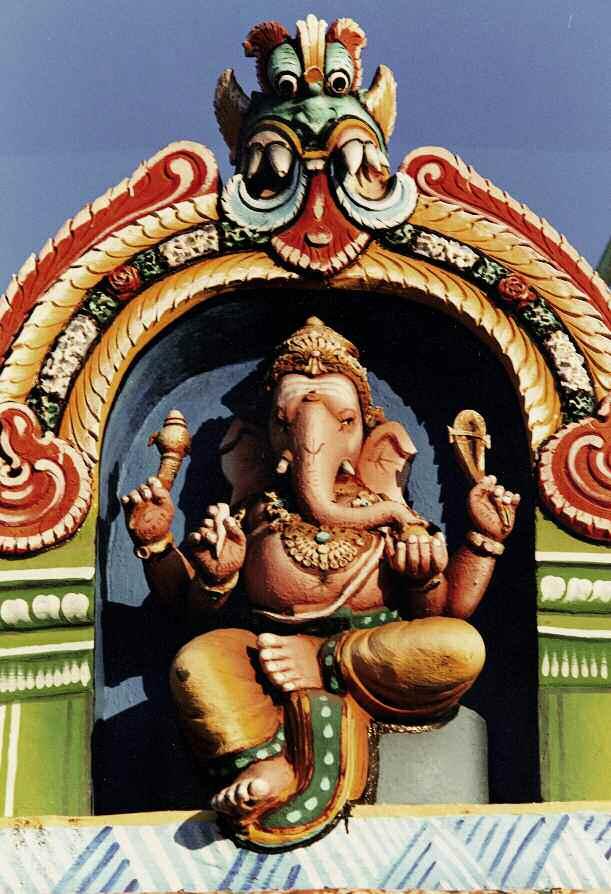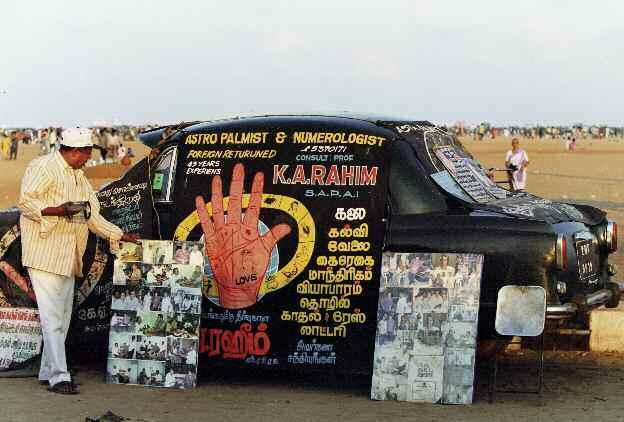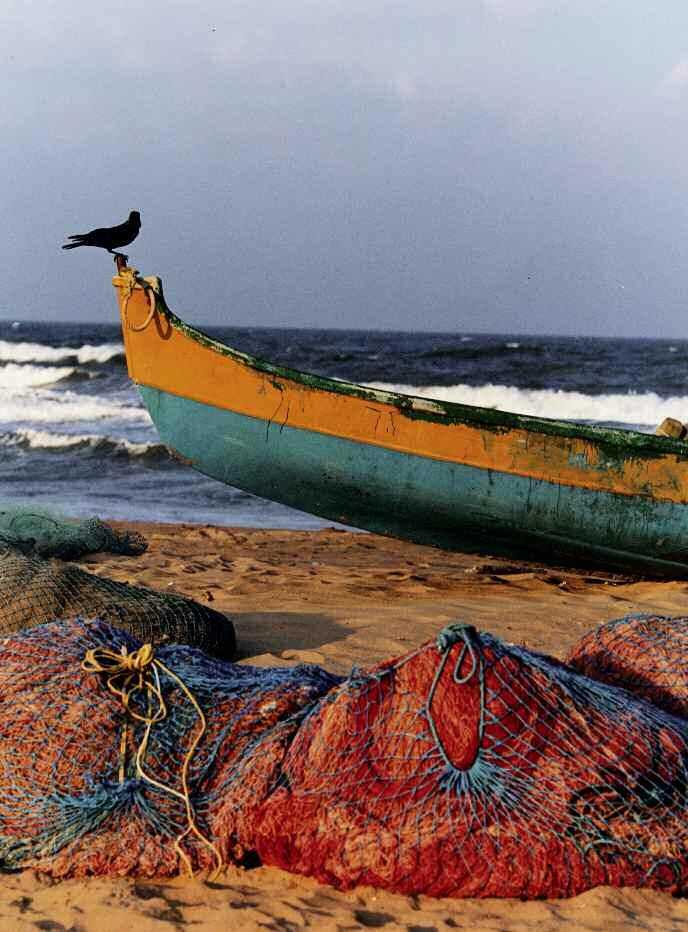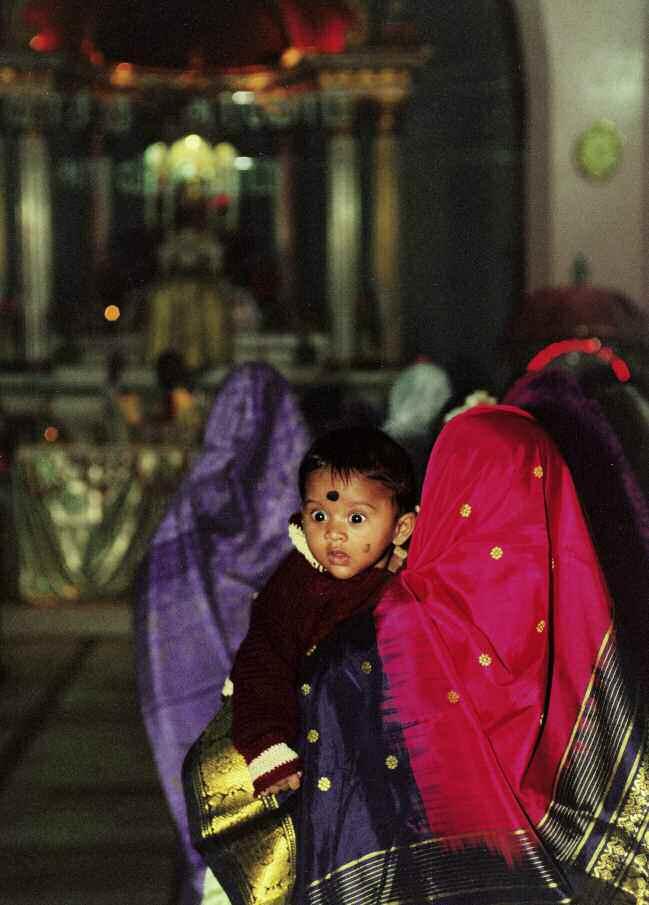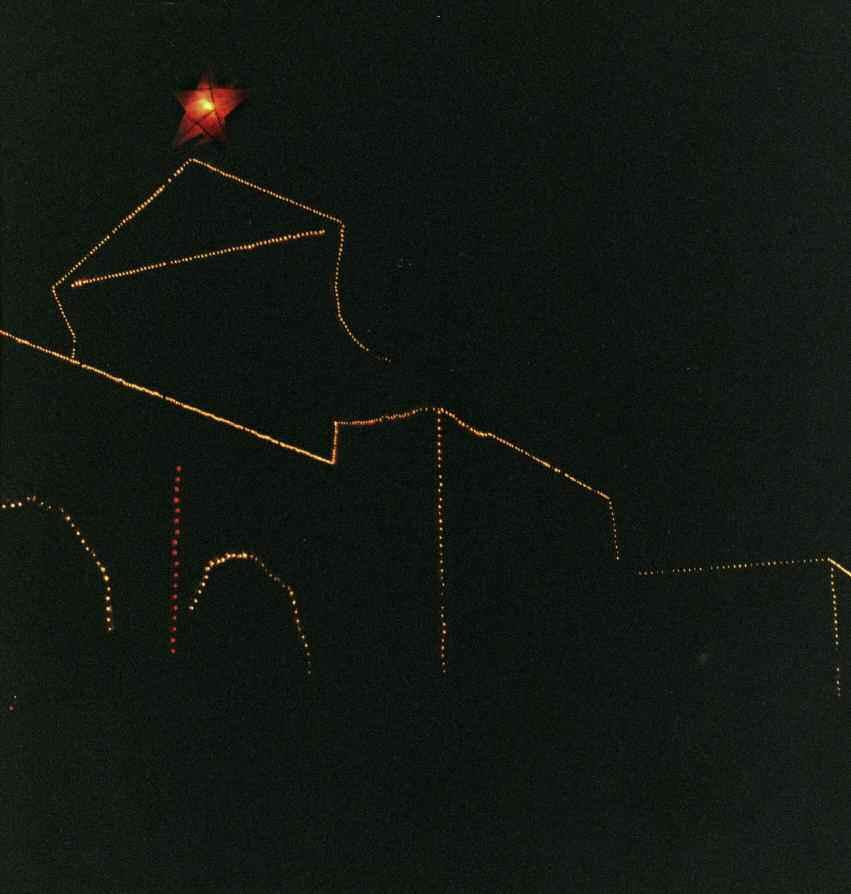



I LOVE MY INDIA


The author of the writing on the wall of Chauki Ghat in Varanasi (on the cover of this book) might have been a young Indian student returning from London or New York or an enthusiastic voyager or, perhaps, just one of the many strollers who walk along the seventy-six ghats (flights of steps leading to the Ganges) of this sacred city. Whoever he was, we completely agree with him. We too are in love with India. It would be very complicated to explain why. For the Indians their country is simply ‘Baratha’, the ‘Mother ’ . They love it as they love their river, the Ganges, which they also consider their ‘Mother ’ . It is a ‘love’ that is so natural and intense that children grow up with it in an environment permeated with a profound sense of religion.
The happenings on the banks of the Ganges, at Varanasi or at Allahabad, are a good example of how deeply rooted is the Indians’ perception of spirituality. Water, the element from which we all come, i s c o n s i d e re d i n I n d i a j u s t t h a t : t h e c l e a n s i n g f l u i d o f l i f e , t h e m e a n s f o r survival, the place where bodies - for the Hindus: ‘the shell’ - return and men are liberated from the suffering caused by the cycle of continuous reincarnations. Indians love their ‘Mother Ganges’. In the West, and in the East, we love other things more: certainly we seem to love all the paraphernalia of our consumer ’s society. R
h
s p
r i t described by Herman Hesse in Siddhartha,
L’autore della scritta a calce sul muro del Chauki Ghat a Varanasi (sulla copertina di questo libro) potrebbe essere uno studente indiano tornato da Londra o da New York, oppure un viaggiatore entusiasta oppure, uno dei tanti fedeli che si muovono continuamente lungo le sponde dei settantasei ghat (scalinate che portano al Gange) di questa città santa. Chiunque egli sia, noi siamo del suo stesso parere. Anche noi amiamo l’India. Sarebbe, tuttavia, molto complicato spiegarne il perché. Per gli indiani il loro paese è semplicemente ‘Baratha’, la ‘Madre’. Lo amano nello stesso modo in cui amano il loro fiume, il Gange, anche questo considerato ‘Madre’. Il loro è un amore così intenso e naturale che i bambini ci crescono dentro, in un ambiente impregnato di religiosità. Ciò che succede sulle sponde del Gange, a Varanasi o ad Allahabad, è la dimostrazione più chiara di quanto sia profondamente radicato il senso di spiritualità degli indiani. L’acqua, l’elemento dal quale noi tutti originiamo, qui viene considerato esattamente questo: il fluido purificatore della vita, un mezzo di sopravvivenza, il luogo dove il corpo, dagli Indù considerato ‘un guscio’, ritorna alla fine di questa vita e l’uomo si libera dalla sofferenza procurata dal ciclo continuo della reincarnazione. Gli indiani amano la loro ‘Madre Gange’. In Occidente, e per questo anche in Oriente, noi amiamo di più altre cose: sicuramente amiamo molto tutti gli orpelli della nostra civiltà dei consumi.
India is still paramount, unchanged and unperishable since the birth of man; it is the motor that generates the force with which even the poorest cope with everyday life.
A country so immobile that, in places, it seems frozen in time. In other places, it is so fast-changing and ‘modern’ that it leaves behind even the gurus of Silicon Valley.
A country of enormous contrasts, impossible t o b e d i g e s t e d a t f i r s t s i g h t b y e v e n t h e m o s t s o p h i s t i c a t e d t r a v e l l e r. O n o n e s i d e , a b o o m i n g i n d u s t r y ; o n t h e o t h e r, t w o o r three hundred million illiterate people still plow their fields with wooden tools and build their houses with cow and camel dung. Ye t , a t f e s t i v a l s , p e a s a n t s d re s s u p a s maharajas in an incredible explosion of c o l o u r s . T h i s i s w h y w e w i l l n o t e v e n attempt to explain our feelings about India but, like the great mughal emperor Akbar, we will just let ourselves be subjugated by the fascination and the magic that India imposes on us. How could we possibly understand or discuss a c o u n t r y w h e re , today like yesterday, Mahatma Gandhi’s words: “to protect a cow is one of the highest manifestations of human evolution” are still a reality? Profound words which mean that l i f e , e v e r y t h i n g t h a t i s a l i v e , m u s t b e respected by man and protected at all costs.
We can only limit ourselves to witness and p h o t o g r a p h t h e s i g h t s , t h e c o l o u r s , t h e people of this kaleidoscopic sub continent. “India is a country of dreams and love, of rags and splendours, the only place in the world where even the narrowest alley opens
La religione, quella dimensione dello spirito descritta così bene da Herman Hesse in S i d d h a r t h a , i n I n d i a è i n u n a p o s i z i o n e d i s u p r e m a z i a , e t e r n a e d i m m u t a t a dall’apparizione dell’uomo sulla terra; il motore che dà la forza di sopravvivere a ricchi e poveri. L’India può sembrare un p a e s e t a l m e n t e i m m o b i l e d a a p p a r i re c o n g e l a t o n e l t e m p o . I n v e c e , i n a l t re occasioni, ci sembra un paese in così rapida evoluzione capace di lasciare indietro anche i guru di Silicon Valley. Un paese di tali contraddizioni che risulta praticamente inspiegabile anche al viaggiatore più smaliziato. Da un lato, un’industria avanzatissima; dall’altro, due o trecento milioni di analfabeti che continuano ad arare la terra con attrezzi di legno e a costruire case con lo sterco di vacche e cammelli. Gli stessi milioni di persone che, nei giorni di festa, indossano abiti da maharaja in una incredibile esplosione di colori. Questi sono i motivi per cui noi non cercheremo nemmeno di dare spiegazioni sull’India ma, piuttosto, così come disse di aver fatto il grande imperatore moghul Akbar, ci lasceremo soggiogare dal fascino e dalla magia che passivamente ci vengono imposti ad ogni angolo di strada. D’altronde, come sarebbe possibile afferrare il significato o discutere un paese dove, oggi come ieri, le parole del Mahatma Gandhi sono una realtà imprescindibile: “proteggere una vacca è una delle manifestazioni più alte dell’evoluzione umana”? Parole profonde il cui vero significato è che l’uomo deve rispettare la vita e tutto ciò che è vita anche se non ha il dono della parola.
on to a spectacle that is bigger than any other on earth”, wrote Mark Twain.
This photographic essay is an incomplete c a n v a s re p re s e n t i n g t h e p e o p l e o f t h e Ganges, Rajasthan (the Land of Kings), the monuments of Agra and Khajuraho and parts of Southern India.

We would like to close this short preface with another quote, this time from Jawaharlal N e h ru : “ I n d i a i s l i k e a n a n c i e n t p a l i m p s e s t on which layer upon layer of thought and reverie have been inscribed. This is the c o m p l e x a n d m y s t e r i o u s p e r s o n a l i t y o f India. Around her is the elusive quality of a legend long ago; some enchantment seems to have held her mind... She is a myth and an idea, a dream and a vision, and yet very real and present…”
Faced with this complexity, we can only suggest to our readers to travel and see India by themselves – some people will love it, others will detest it. We hope, however, that the majority will return gratified for having l i v e d a u n i q u e e x p e r i e n c e a n d t h a t , a s i t h a s happened to us, their relationship with India and its people might develop into a continuing love affair.
Noi possiamo limitarci soltanto ad osservare e a fotografare i luoghi, i colori, la gente di questo infinito caleidoscopio. “L’India è un paese di sogni e di amore di stracci e di splendori, l’unico posto al mondo dove anche il vicolo più angusto si apre su uno spettacolo senza pari”, scriveva Mark Twain.
Questo libro di fotografie è un omaggio alla gente del Gange, al Rajasthan (il Paese dei Re), ai monumenti di Agra e Khajuraho, e al Sud: una piccola parte di quello che l’India realmente è.
E qui vorremmo chiudere questa breve prefazione con un’altra citazione, questa volta di Jawaharlal Nehru: “L’India è come un antico palinsesto sul quale sono stati iscritti, strato dopo strato, sogni e pensieri. Questa è la complessa e misteriosa personalità dell’India. Essa conserva una qualità irreale di leggenda lontana che qualche sorta di incantesimo sembra aver salvaguardato nel tempo… È un mito e un’idea, un sogno e una visione, reale e presente…”
Di fronte ad una tale complessità, noi possiamo soltanto suggerire ai nostri lettori di farsene un’opinione diretta, visitandola. Alcuni la ameranno, altri la detesteranno. Noi speriamo, tuttavia, che la maggioranza di essi possa vivere un’esperienza indimenticabile e che, come è accaduto a noi, il contatto con l’India e la sua gente si trasformi in un rapporto d’amore duraturo.


The S angam: hree sacre d r vers meet at this po nt the Ganges the Yamuna and the myth ca S araswati
Il Sangam: tre fiumi sacri confluiscono in questo punto, il Gange lo Yamuna e il mitico Saraswati
Al ahabad Kumbha Mela 2001
Kumbha Me a s the most anc ent and amous rel g ous gathe ng in the wor d On the ho est days, crowds of up to ten mi ion fai hfu gathe on the banks o the Ganges The S angam n A lahabad s the mos sacre d o al bath ng spots The Kumbha Me a akes p ace ever y t welve years in the towns of Nasik U ja n, Har dvar and A ahabad A sma ler vers on o the Me a ( i eral y fa r) occ u s ever y three years The Kumbha Me a of Al ahabad be ng the f rst one of the new M lennium, w l have been the mos mpo ant of the Centur y. Kumbha de ives f om kumbh (a c ay vase) wh ch accor d ng o H ndu mytho ogy conta ne d the ne c tar of mmor ta t y Gods and demons fought for possess on of the kumbh When the gods won he batt e our drops of the ho y ne c ta fel on Ear th on the fou nd an towns The H ndus bel eve tha dur ng the Kumbha Me a he ne c ar f ows th ough he sac e d r iver
Kumbha Mela è il più antico e famoso evento religioso del mondo. Nei giorni propizi, folle di oltre dieci milioni di fedeli si riuniscono sulle rive del Gange Il Sangam in Allahabad è il punto più sacro La Kumbha Mela ha luogo ogni dodici anni nelle città di Nasik, Ujjain, Haridvar e Allahabad. Una versione minore della Mela (letteralmente fiera) si svolge ogni tre anni. La Kumbha Mela di Allahabad essendo la prima del nuovo Millennio è considerata la più importante del secolo Kumbha deriva dalla parola kumbh (un vaso d argilla) che, secondo la mitologia Indù, conteneva il nettare dell’immortalità. Dei e demoni se ne disputarono il possesso Quando gli dei vinsero la battaglia, quattro gocce del sacro nettare caddero sulla terra, sulle quattro città indiane Gli Indù ritengono che durante la Kumbha Mela nel fiume sacro scorra il prezioso nettare






A te bathing n the Ganges, sar s and dhot s - fema e and ma e garments respe c t velya e put o d y n the sun.


Dopo il bagno nel Gange, sari e dhoti - rispettivamente indumenti femminili e maschilisono stesi al sole ad asciugare
A lahabad, Kumbha Me a 2001.
The Ganges at Varanas
Sulle rive del Gange a Varanasi
Va anas the cit y o Shiva s the most sacre d p ace n nd a Bath ng and wash ng n he holy waters of the Ganges pur f es the H ndus from al sins D y ng at Varanas ( he con uence of the r vers Var una and Asi and hav ng one s ashes scatte e d n the Ganges means ach ev ng ‘moksha or en ghtment the re ease f om the eterna c yc e of reinca nat on

Varanasi, la città di Shiva è il luogo più sacro dell India
Immergersi nelle acque purificatrici del Gange libera gli Indù da ogni peccato Morire a Varanasi (dove confluiscono i fiumi Varuna ed Asi) e avere le proprie ceneri disperse nelle acque del Gange significa raggiungere lo stato di ‘moksha’ o illuminazione liberandosi dal ciclo eterno della reincarnazione

S adhus at A ahabad Kumbha Mela 2001


The ve tica ma k ngs on the orehead are ca e d t laka’ This par t c u ar ti aka s one of the o des and nd cates a S adhu of he Va shanava se c t be ong ng to the Shrı monast c o der
I segni verticali sulla fronte si chiamano ‘tilaka Il tilaka’ qui riprodotto è uno dei più antichi e indica l appartenenza del Sadhu alla setta di Vaishanava e in particolare all’ordine monastico di Shrı.


R owing towar ds the S angam, he unc t on of he three sacre d r ve s: the Ganges, he Yamuna and the S araswati The greatest desi e and sp r tua ne cess t y of the H ndu is to bathe at east once a a ‘t r tha (ho y place of pi gr mage) The most sacre d o al th r thas s the S angam o A ahabad

Remando verso il Sangam, la confluenza dei tre fiumi sacri: il Gange lo Yamuna e il Saraswati Il più grande desiderio e bisogno spirituale di un Indù è immergersi in un ‘tirtha (luogo sacro di pellegrinaggio) Il ‘tirtha’ più sacro è il Sangam di Allahabad
A ahabad Kumbha Me a 2001.

The ho izon a markings (name d para ti aka) on the fo ehead of he S adhus nd cate the be ong ng to the Shaiva se c t devo e d o he c u t of Lor d Shiva

I segni orizzontali sulla fronte del Sadhu (chiamati para tilaka) denotano l’appartenenza alla setta Shaiva, depositaria del culto di Lord Shiva

The S angam o A lahabad in the background
Sullo sfondo il Sangam di Allahabad

The lower ady on the banks of the Ganges at Varanasi F owers are an essent a par t of pu a’, he itua o prayers and of er ngs
La fioraia sulle rive del Gange a Varanasi I fiori sono parte essenziale della puja’, il rito di offerte e preghiere

S adhus at he Kumbha Me a A lahabad.
The tr dent is a symbol of Lor d Shiva ( eft The S adhu on the r ght s pe orming h s ascet c penance Holy men can choose wha ever form of phys cal mor t f cat on hey be eve w l better sharpen he r devo ion or he D v ne Th s one m ght stand on one eg or hours maybe or days


Sadhu alla Kumbha Mela di Allahabad.

Il tridente è simbolo di Lord Shiva (a sinistra) L uomo a destra sta compiendo una penitenza ascetica Il Sadhu è libero di scegliere qualsiasi forma di sacrificio fisico per migliorare il proprio contatto con il Divino. Costui potrebbe rimanere su una sola gamba per ore, forse per giorni.


PREV OUS PAGES
Varanas The most auspic ous time to bathe s du ing fu moon days when crowds f ock to he banks of the Ganges
PAGINE PRECEDENTI: Varanasi Il momento più propizio per bagnarsi nel Gange è durante i giorni di luna piena, quando folle di pellegrini accorrono sulle rive del fiume sacro
Chi dren at Va anas
Bambini di Varanasi










Varanas , o Benares as the Eng sh cal e d i , o K ash (resp endent w th div ne ght) s the cap ta of H ndu a th I s as mpor tant o H ndus as Me cca s to Moslems t is considere d one of the o dest c t es n the wor d


The Buddha came here in 500 b C and at S arnath 12 k lomet es rom Varanas , he preache d h s f rst sermon
Varanasi o Benares per gli Inglesi o Kashi (risplendente di luce divina) è la capitale spirituale dell’India

Per gli Indù la città è importante quanto la Mecca per i Mussulmani Varanasi è una delle città più antiche del mondo Il Budda vi giunse nel 500 a.C. ed è qui a Sarnath, a soli 12 chilometri da Varanasi che egli predicò per la prima volta

A SINISTRA: Varanasi


R GHT Dr y ng c othes at A lahabad
The S adhus on he left treasure the water of the sacre d ver.
A DESTRA: Dopo il bagno ad Allahabad
I Sadhu a sinistra fanno tesoro dell’acqua del fiume sacro










Bathing a one o the ghats at Va anas

The ghats the stone embankments eading to the Ganges were bui t over the centu ies to pro e c the sho es of he iver. Many of them we e cons r uc e d by the Mahrat as (a H ndu dynast y oppose d to the Mugha s) in the e ghteenth centur y

Folla di fedeli su uno dei ghat di Varanasi

I ghat, scalinate di pietra che scendono al livello del Gange, furono costruiti nel corso dei secoli per proteggere le rive del fiume sacro La maggior parte dei 76 ghat ancora esistenti sono opera dei Mahratta una famosa dinastia Indù opposta al dominio dei Moghul (sec XVIII).



N ghts are co d and foggy on the gha s of Varanasi where p gr ms wai to ba he at dawn the mos ausp c ous t me of he day

Le notti sono fredde e nebbiose sui ghat di Varanasi dove i pellegrini attendono l’alba per immergersi nel Gange


Man ka nika ghat the cremat on gha o Varanas
Be ng cremate d and having one’s ashes scat ere d n he Ganges or the H ndu means he re ease rom the pa n ul c ycle o con inuous reinca nat on and the achievemen of moksha or en igh men , he ete na un t y w th Brahma.
Manikarnika ghat il ghat delle cremazioni a Varanasi.

Per l’Indù essere cremato e avere le proprie ceneri disperse nel Gange significa liberarsi dal sofferto ciclo di molteplici reincarnazioni e raggiungere lo stato di moksha o illuminazione, l’unione eterna con Brahma

F owers, itua ‘puja of ers f oa ing on the Ganges together wi h o her inhabi ants of the r ve Fiori offerta rituale sulle acque del Gange insieme ad altri abituali frequentatori del fiume sacro

“ W h a t e v e r m a n g i v e s m e i n t r u e d e v o t i o n : F r u i t o r w a t e r a l e a f a f l o w e r , I w i l l a c c e p t i t . T h a t g i f t i s l o v e h i s h e a r t s d e d i c a t i o n ” “ Q u a l s i a s i c o s a l u o m o m i d i a c o n c u o r e s i n c e r o : F r u t t a o a c q u a u n a f o g l i a u n f i o r e l o a c c e t t e r ò Q u e l d o n o è a m o r e è l o s l a n c i o d e l s u o c u o r e ” . B h a g a v a d G i t a








 Ja sa mer Ba a Bagh cenotaphs where the maharajas we e c emate d and bur e d
Jaisalmer. Le tombe di Bara Bagh dove i maharaja venivano cremati e sepolti.
Ja sa mer
The Mona L sa of the Deser t Fest val Jaisalmer
Ja sa mer Ba a Bagh cenotaphs where the maharajas we e c emate d and bur e d
Jaisalmer. Le tombe di Bara Bagh dove i maharaja venivano cremati e sepolti.
Ja sa mer
The Mona L sa of the Deser t Fest val Jaisalmer


Women wear ing heav y ewe er y at the Dese t Fest va n Jaisalmer. vor y and bone b ace ets cove ing the a ms nd cate new y marr e d women. The re d spo on the fo ehead ca le d ‘t ka s a mark of beaut y and e egance. s bel eve d tha the ‘t ka was or ginal y a drop o a sacr f ce d anima s blood p ace d on the forehead o a God s image as a sign of devot on




Le donne indossano ricchi gioielli durante il Festival del Deserto di Jaisalmer
I braccialetti d’osso e d avorio adornano le braccia delle donne appena sposate. Il segno rosso sulla fronte chiamato ‘tika , è indice di bellezza ed eleganza
Originariamente il ‘tika era una goccia di sangue di un animale sacrificato impressa sulla fronte di statue sacre come segno di devozione e rispetto

The swast ka s an ancient Ar yan symbol The wor d n sansk t means happiness and heal h.

La svastica è un antico simbolo Ariano La parola in sanscrito significa felicità e salute.



R a asthan, known n ormer t mes as R aj putana is the Land of Kings In fac ‘ a a n sanskr t means king’ but a so s gn f es “he whose dut y s o ser ve” The R a puts, cons de e d o be the sons of k ngs are he descendan s of th r t y-s x roya races dat ng back t wo thousand years These brave warr ors are amous for he r p de and courage in bat le.

Rajasthan, l’antica Rajiputana è il Paese dei Re’ Infatti, in sanscrito ‘raja significa ‘re’ ma indica anche “colui il cui dovere è servire” I Rajiput sono considerati figli di re e discendenti delle trentasei stirpi reali che risalgono a duemila anni fa Questi valorosi guerrieri si distinguono per il loro orgoglio e coraggio in battaglia.


BELO W
Hand p in s of f f een proud women who comm tte d ‘sat an ac t of se f- mmolat on on a fune a pyre per orme d by he w ves of R a asthani war ors (raj puts) who die d on the batt ef e d.
The wo d ‘sat ’ der ves f om the name of a goddess who ki e d herse to de end the honou o her husband R udra Shiva

The hand p nts can be seen on the wa of the ron Gate at Mehrangarh Fo , Jodhpur

IN BASSO:
Impronte delle mani di quindici donne Rajasthane che, commettendo ‘sati’ si immolarono gettandosi sulla pira funeraria dei mariti (rajiput) morti eroicamente in battaglia
La parola ‘sati’ è il nome di una dea sacrificatasi per difendere l’onore del proprio marito Rudra Shiva
Le impronte si trovano sul muro dell’ Iron Gate del Forte di Mehrangarh di Jodhpur.
The members of the B or der Se c ur t y Force are excel en came r de s They pat ol the ndian bo ders wi h Pak stan a ong the Thar Deser t
I membri del Border Security Force sono esperti cammellieri Pattugliano le frontiere indiane con il Pakistan lungo il Deserto del Thar.





Tu bans bea ds and mustaches at he Ja salmer Fest val SEE ALSO FOLLO W NG PAGES

Turbanti, barbe e baffi al Festival di Jaisalmer.

VEDI ANCHE PAGINE SEGUENTI

The dress of the R a iput s nf uence d by the mi tar y past o these b ave warr ors n batt e the heav y turbans name d pugr s prote c te d them from the swo ds of the enemy


L’abbigliamento del Rajiput ha origine nella tradizione militare di questi coraggiosi guerrieri I pesanti turbanti di stoffa chiamati ‘pugris’ erano una protezione nelle battaglie all’arma bianca







Have o Jaisalmer
The have i a e the e egan eighteenth and n ne een h cen ur y pa aces of wea thy Hindu traders S ome o them are st l nhab te d by he descendan s of the or g na owners Those shown here are wo w ndows of he Pat won k have i s tuate d n a narrow street outs de the wa ls of a sa me Havel s a wo d of Pers an or g n and t means an enc ose d space surrounding an open cou .
Haveli di Jaisalmer
Gli haveli sono i meravigliosi palazzi del secolo XVIII e XIX costruiti da ricchi commercianti Indù Alcuni di essi sono ancora abitati dagli eredi dei proprietari originari Queste due finestre si aprono sulla facciata del Patwon ki haveli, situato in una angusta strada fuori le mura di Jaisalmer Haveli è una parola di origine persiana che indica una costruzione talvolta alta anche cinque piani, intorno ad un cortile aperto.

The Pat won k havel is the arges and most elaborate o Jaisalmer have s ts const uc t on began n 1805 and t took t y years o complete G unnan Chand Pat wa, a t ade who owne d shops from Afghan stan to Ch na bu t t for h s f ve sons On the r ight a w ndow of the Pat won ki have i Il più grande ed elaborato haveli di Jaisalmer è il Patwon La costruzione fu iniziata nel 1805 e durò cinquanta anni Gunnan Chand Patwa, un mercante i cui commerci si estendevano dall’Afghanistan alla Cina, lo costruì per i suoi cinque figli A destra, il dettaglio di una finestra del Patwon ki haveli





Wal s of Ja sa me
ABO VE:

Ganesha, god o w sdom and prosper i y son of Sh va and Par vat .


Muri di Jaisalmer



SOPRA:
Ganesha, il dio della saggezza e della prosperità, figlio di Shiva e Parvati.


LEFT
The inter or of a Ja n Temp e ins de the wa s o Ja sa mer Ja n sm is an ascet c re ig on founde d by Va dhamana Mahav ra a contemporar y o Buddha Ja ns bel eve in ahimsa a doc tr ne teach ng that a v ng beings have a soul and that, herefore the r ex stence must be respe c te d at al cos s
A SINISTRA: L’interno di un tempio Jaino dentro le mura di Jaisalmer Il Jainismo è una religione ascetica fondata da Vardhamana Mahavira contemporaneo di Budda I Jaini credono nell ahimsa’ una dottrina che insegna che tutto ciò che è stato creato ha un anima e che quindi, la vita va rispettata ad ogni costo R
Jodhpur
Façade of the Maharaja s pa ace ns de the Mehrangarh For t R udya d K pl ng descr be d he Fo as a c eation o “angels fair es and giants” The wal s of th s mmense and nvu ne ab e fo i ica ion have a six-m e circ umfe ence

A DESTRA: Jodhpur Facciata del palazzo del Maharaja all interno del Forte di Mehrangarh descritto da Rudyard Kipling come una creazione di “angeli, fate e giganti”
Le mura di questa immensa ed invulnerabile fortificazione si estendono per una circonferenza di dieci chilometri





Young mus c ans and a g rl dancer ( igh ) n the c tadel of For t Mehrangarh n the background the blue houses o Jodhpu


Or g na y the blue colour denti ie d the houses o Brahm ns the higher cas )
Today odhpur is often re er e d to as the ‘B ue C t y
SEE FOLLO W NG PAGES
Giovani musicisti e ballerina (a destra) nella cittadella del Forte di Mehrangarh
Sullo sfondo le case blu di Jodhpur
Originariamente il colore blu indicava le case dei Bramini (la casta più alta)
Oggi Jodhpur è conosciuta come la ‘Città Blu’



The turban is an essent a par t of the trad tiona costume of R ajasthan men s st yle, co our and volume (up o en meters of c oth) ndica e caste p ace of or gin and social sta us
Il turbante è parte essenziale del costume tradizionale degli uomini Rajasthani Stile, forma, colore e volume (fino a dieci metri di stoffa) indicano casta origini e stato sociale di colui che lo indossa.







The Deser t Houses o Khur a deser t v lage t went y-f ve m es S ou hwest of Ja sa mer
Il Deserto Case di Khuri, un villaggio nel deserto a quaranta chilometri da Jaisalmer


Ch ldren of dese vi ages R a asthan.
Bambini di villaggi del deserto nel Rajasthan.




Bu d ng houses n the R a asthani dese c ose o the bo der w th Pak stan A m x ture of sand and cow and came dung s use d to keep he houses coo n he summer and warm n the w nter
Case in costruzione nel deserto del Rajasthan non lontano dal confine con il Pakistan Un impasto di sabbia e sterco di vacca e cammello viene usato per tenere le case fresche d estate e calde d’inverno




Came safa is are popular around Ja sa mer

Th s is Dhal a a fr endly came , n the v lage of Khur i
Il “Camel Safari” è uno sport popolare nel deserto nei dintorni di Jaisalmer Questa è Dhalia, un simpatico cammello, nel villaggio di Khuri






S adhus on the shore o the Lake and the one on the r ght y ng n a s reet o he ho y town of Pushkar
The Pushka Lake s the most sacre d n ndia and ts powers o pur f cat on for the p gr ms ba hing the e a e se cond on y to the Ganges
Sadhu sulle rive del lago e quello a destra, in una strada di Pushkar

Il lago di Pushkar è considerato il più sacro dell’India ed i suoi poteri purificatori per coloro che vi si bagnano sono secondi solo a quelli del Gange

On the way to a chi dren s we dd ng ce emony bet ween Jodhpu and Ja sa mer
The br de w th a ye low ve l on her head and he d by her mother, s seen in the photo on the eft

The br degroom with the re d tu ban and de cora ions s seen in the photo be ow Mar iages bet ween ch ldren are forb dden in Ind a but cont nue o be arrange d by ami es n the countr ys de Matrimonio tra bambini in una località tra Jodhpur e Jaisalmer


La promessa sposa, con un velo giallo sulla testa e con a fianco la madre è la bambina che appare nella foto a sinistra Il promesso sposo con il turbante rosso e decorazioni, è il bambino della foto in basso I matrimoni tra bambini in India sono vietati ma continuano ad essere organizzati nelle campagne




“ T h e G r e a t G o d i s O n e a n d t h e l e a r n e d c a l l H i m
b y d i f f e r e n t n a m e s ” .
“ I l v e r o D i o è U n o e i s a g g i L o c h i a m a n o c o n n o m i d i v e r s i ” .
U p a n i s h a d ( 8 o o - 4 o o b . C . )
The full moon of November at Pushkar.

An impor tant Camel and Cattle Fair takes place in Pushkar dur ing the full moon of November.
Two hundre d thousand traders and f ift y thousand animals arr ive in Pushkar dur ing the ten days of the fair
Luna piena di Novembre a Pushkar. Un’importante fiera di cammelli si svolge a Pushkar durante la luna piena di Novembre Duecentomila commercianti e cinquantamila animali arrivano a Pushkar durante i dieci giorni della fiera.




LE T:
The Taj Maha e le c te d n the Yamuna r ver. D ur ng he w nter the r ver s a most dr y but it swe ls up dur ing the monsoon


A SINISTRA:
Il Taj Mahal riflesso nel fiume Yamuna Durante l’inverno il fiume è quasi asciutto ma il livello dell acqua cresce durante il monsone.
View f om the Agra For t In the background the Ta Maha . The constr uc t on of the Agra For t began in 1566 under he great mughal empero Akbar O ig na y conceive d as a m itar y ns a lat on, the For t be came the emperors residence under emperor Shah Jahan the bu lder of he Ta Maha
Dettaglio del Forte di Agra Sullo sfondo il Taj Mahal La costruzione del Forte di Agra fu iniziata dal grande imperatore moghul Akbar nel 1566 Concepito come una istallazione militare, sotto Shah Jahan, il costruttore del Taj Mahal il Forte divenne residenza degli imperatori moghul



nd an our sts vis t ng he Ta Maha The wh te marb e of the monument comes from R a asthan and changes co our depending on the hou o the day.
Gruppi di turisti indiani in visita al Taj Mahal Il marmo bianco del monumento proviene dal Rajasthan e cambia colore secondo le ore del giorno.

A
A


The Ta Maha s the most amous monument n the wor d de d cate d o ove and sorrow
I was bu l by the mugha empe or Shah Jahan n memo y of h s be ove d w fe Mumtaz who die d n 1631 wh e giving b r th to her four teenth chi d t took t wen y-one yea s to bu ld and Shah Jahan emp oye d a number of arch te c ts rom France, ta y ( Ve on o da Venez a) Turkey and ran 20 000 workers and 1 000 elephants
Depose d by h s son the vio ent Aurangzeb
Shah Jahan die d as a pr soner in the Agra For t and rom h s w ndow see page 142 he cou d see he Ta Maha across the r ver Shah Jahan and Mumtaz are bu ie d n a vau t under the mausoleum
Il Taj Mahal è il più famoso monumento al mondo dedicato all’amore e al dolore Fu costruito dall’imperatore moghul in memoria della sua amata consorte Mumtaz la quale morì nel 1631 dando alla luce il suo quattordicesimo figlio

Furono necessari ventuno anni per costruirlo e Shah
Jahan si servì di architetti famosi provenienti dalla Francia, dall Italia (Veronio da Venezia), dalla Turchia e dall Iran, oltre a 20 000 artigiani e più di 1 000 elefanti Deposto da suo figlio, il feroce Aurangzeb, Shah Jahan morì prigioniero nel Forte di Agra da dove (vedi pagina 142) poteva osservare il Taj Mahal al di là del fiume. Shah Jahan e Mumtaz sono sepolti in una cripta sotto al mausoleo
Mother and son y ng rom a roo o he Ag a For t


Volando da un tetto all’altro nel Forte di Agra



R GHT
The tomb of Mir za Beg a nob e Pe s an d p omat whose n e ce Mumtaz Maha marr e d Shah Jahan

The mughal empero bu t the Taj Maha n her memor y
The bu ding s nte est ng be cause it s the f rst example o p etra du a nlay work mpor te d from Pers a I s a ch te c tu a nes announce those of the Ta
A DESTRA:
La tomba di Mirza Beg, un nobile persiano la cui nipote Mumtaz Mahal sposò Shah Jahan che le dedicò il Taj Mahal La costruzione è interessante perché è il primo esempio dell arte dell intarsio chiamata ‘pietra dura importata dalla Persia Questo concetto architettonico preannuncia quello del Taj Mahal







Agra


